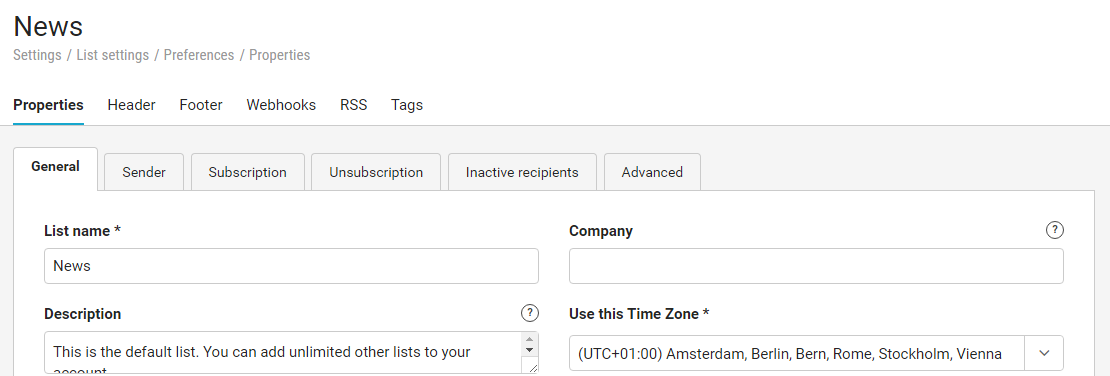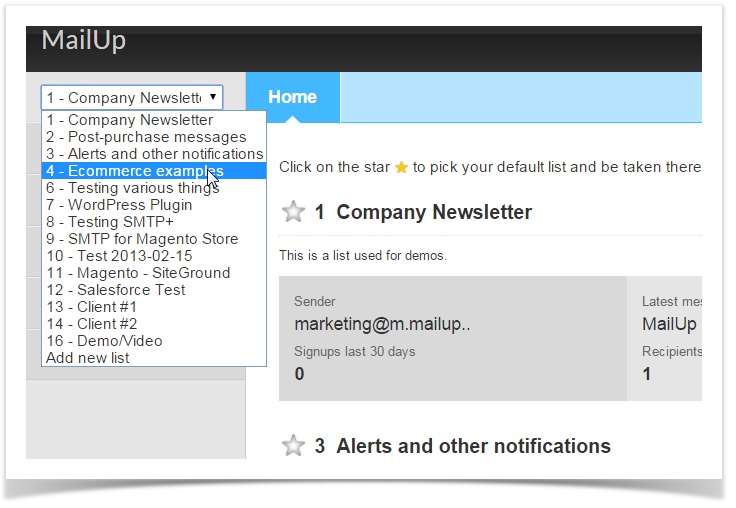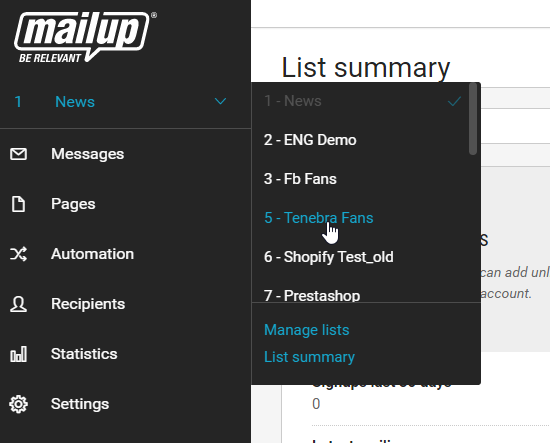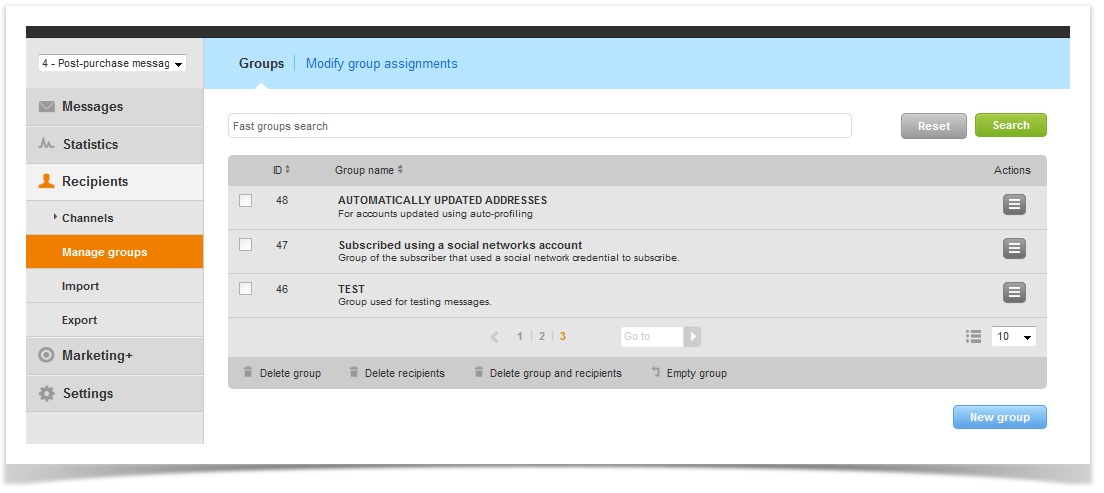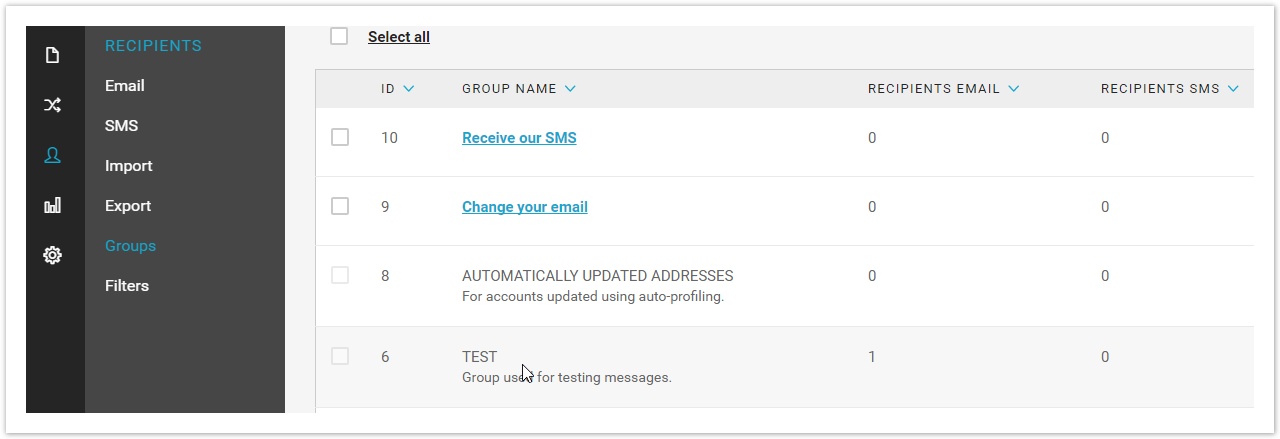...
As you get started, one thing to keep in mind is that Recipient fields (e.g. custom fields in your contacts database) are set at the account level. For example, if you need a custom field that holds a recipient's ZIP code, you will set it there. Especially if you plan on importing contacts into MailUPMailUp, we recommend that you look at Recipient fields first.
...
MailUp is a multi-list environment, each list is completely independent of the other, each with it's its separate import of recipients and subscription status, message settings, user settings and statistics. Therefore, most of MailUp's features are handled at the List level, and the user must always first choose the List to operate in.
...
- You have more than one company newsletter
- You run an ecommerce store and send Daily Specials, Weekly Promotions, New Arrivals, etc. and want recipients to be able to subscribe/unsubscribe independently to/from each of them
- You decide to use MailUp's SMTP+ feature, a built it -in SMTP relay service perfect for all of your transactional and/or company emails
You want to send a Welcome series by using triggered messages, and and want recipients to be able to opt out from the Welcome series separately from your regular newsletter
| Note | ||
|---|---|---|
| ||
By default, your MailUp account will include one List, named "News" (you can rename it). You can add new Lists under the Account settings. Once you add a new List, a drop-down will appear in the top-left corner, allowing you to easily move from one list to the next. |
...
After you've configured your Account Settings as indicated above, you will need to set up your your List settings. Since all activity is handled at the List level, you must configure your settings for each list you create (even for the default List!). Once in the MailUp admin panel, select Select Settings > Account List Settings > ListsPreferences.
For your default List, click on the "List tab". Review the tabs: Categorization, Sender, Subscription, Unsubscription, and Advanced Options. Click through all the tabs , especially the Advanced Options, to set email headings display, and tracking preferences.
For all additional lists, click New tab and name preferences. All settings marked with a * are mandatory.
To create a new list, go to Settings > Account settings > Lists and click on "NEW LIST". Name your list in the Name field. You can choose to fill the Company field for internal purposes only.
...
Once you've created additional lists, a drop-down box will appear on your admin panel. Be sure to choose the from the right list when operating MailUp!
Default Messages
There are four important templates notification messages to review if you'd like to Test more default messages, which are located in the Subscription and Unsubscription tabs in the Group page:before starting to use your account. They are located in Settings > List settings > Notification messages.
- Confirmation Request Email: Sent to request that a user confirms his/her subscription.
- Email to Confirmed Recipients: Sent to confirm the subscription after they click in the link contained in the CONFIRMATION REQUEST.
- Email to Unsubscribed: Sent Sent to a contact that has decided to unsubscribe.
SMS to Subscribed: Text message sent to customer to confirm subscription.
...
It is not necessary to create a new group for testing purposes. Within a List, you can manually insert recipients to the default Test group to do test mailings. To access the Test group, go to Recipients > Email > Manage Groups. In the Groups tab, you will see the group named TEST listed by default.

